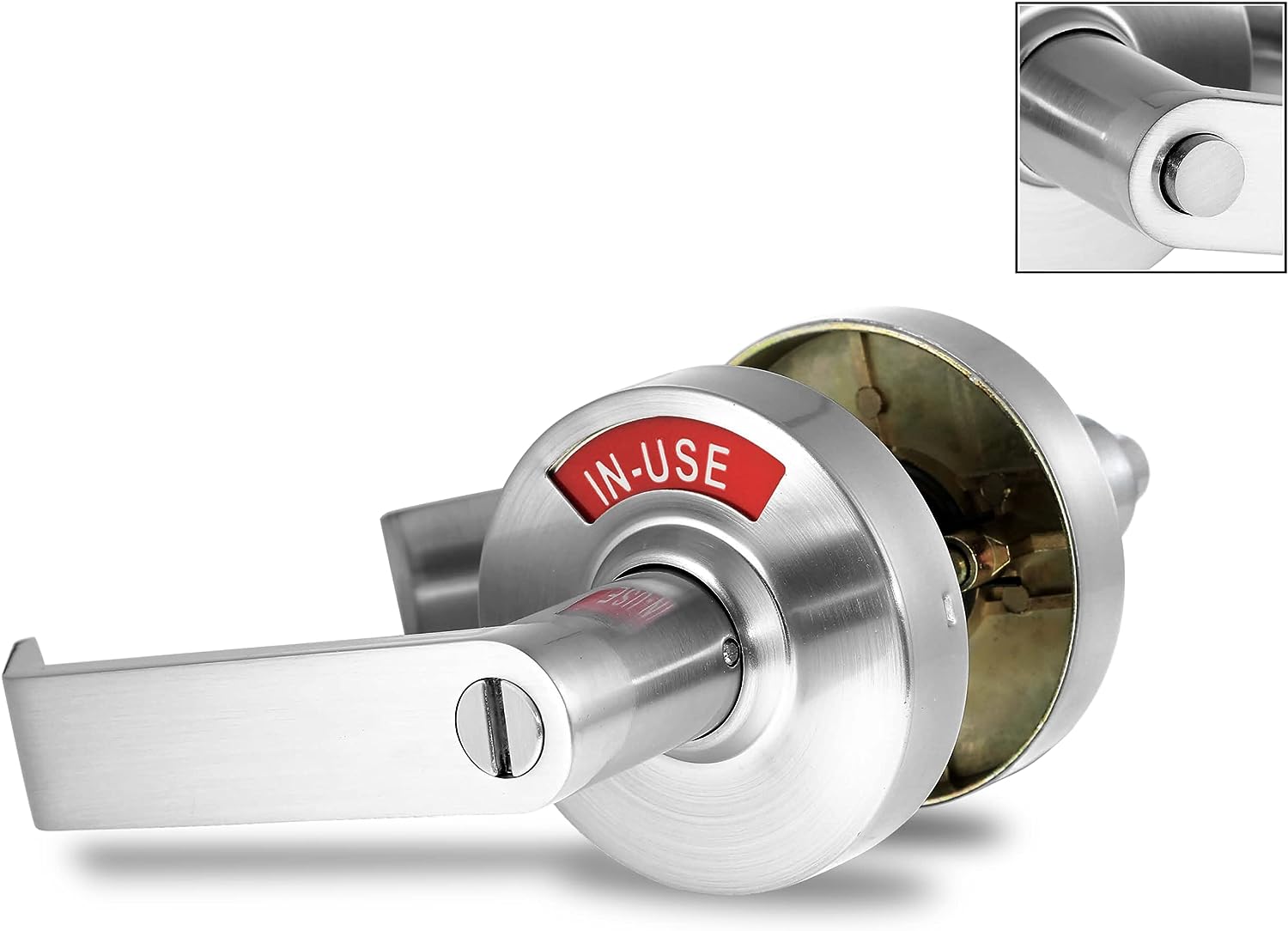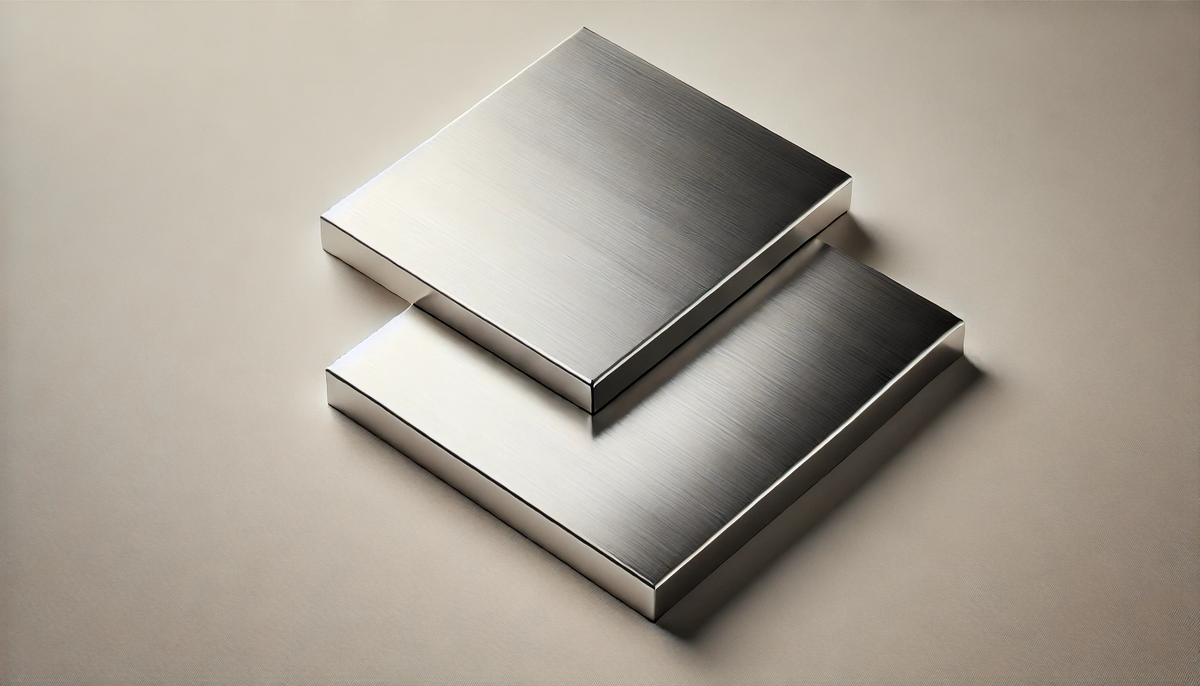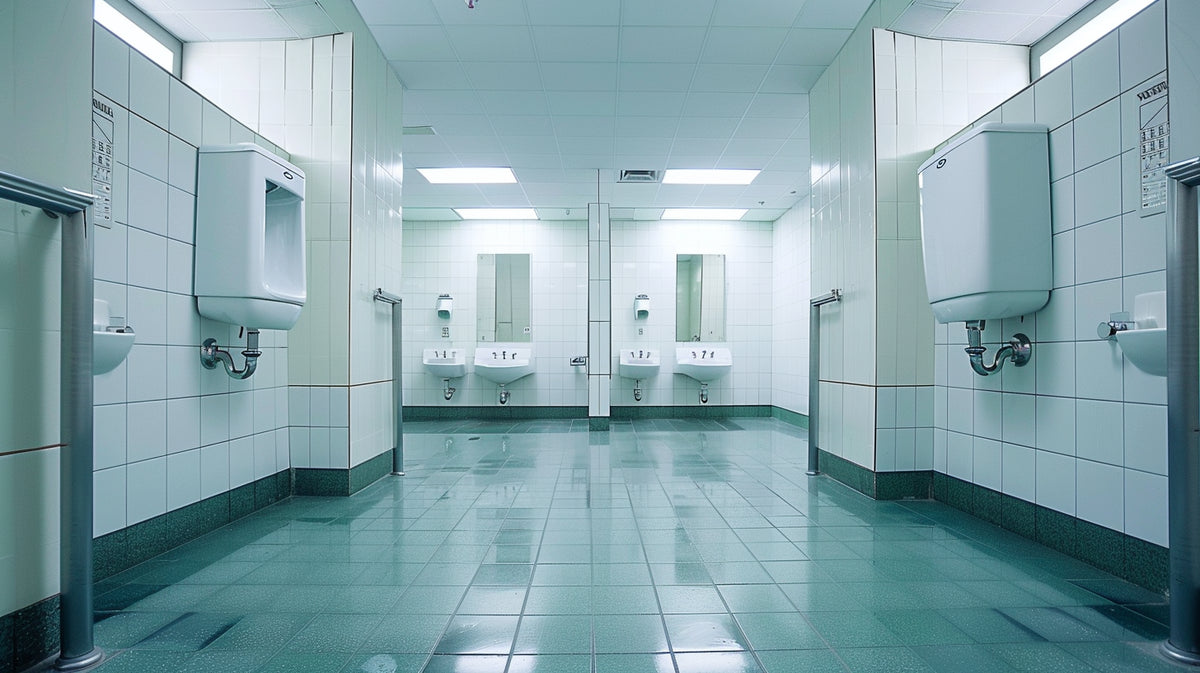
When it comes to selecting door hardware, choosing the right material is crucial not only for functionality but also for aesthetics and longevity. Door handles, hinges, and locks endure constant use, exposure to different environmental conditions, and, in some cases, the effects of time and wear. The right material ensures that your hardware remains durable, easy to maintain, and complements the design of your space.
Two of the most popular materials in the market today are satin chrome and stainless steel. Both offer unique benefits and distinct visual appeal, making them excellent choices depending on the specific needs of your project. Satin chrome is known for its smooth, matte finish and modern look, while stainless steel stands out for its exceptional durability and corrosion resistance. In this article, we’ll dive into a detailed comparison of satin chrome and stainless steel to help you determine which is better suited for your door hardware.
Understanding Satin Chrome
Definition and Composition of Satin Chrome
Satin chrome refers to a specific type of chrome plating finish that is applied to various metals, such as brass or steel, to enhance both its appearance and durability. It undergoes an electroplating process, where a layer of chromium is applied to the surface, creating a protective and decorative finish. Unlike polished chrome, which has a shiny, reflective surface, satin chrome is specially designed to produce a smooth, matte appearance.
Characteristics
One of the most notable characteristics of satin chrome is its subtle, low-reflective finish. The matte texture of satin chrome not only gives it a sleek and modern appearance, but it also resists showing fingerprints and smudges, making it easier to maintain a clean look over time. Its smooth finish is less prone to scratches and wear compared to high-gloss finishes, adding a layer of practicality to its aesthetic appeal. The soft, muted shine of satin chrome allows it to blend seamlessly into contemporary designs, without being too attention-grabbing or overwhelming.
Common Uses for Satin Chrome
Due to its understated elegance, satin chrome is often used in modern and minimalist interior designs. It is particularly popular in office spaces, apartments, and homes where a clean, sleek look is desired. Satin chrome hardware is frequently seen on door handles, knobs, faucets, and lighting fixtures, as it adds a touch of sophistication without clashing with other design elements. Its ability to pair well with neutral tones and muted color palettes makes it a favorite for those looking to create a streamlined, cohesive look in their space.
Understanding Stainless Steel
Definition and Composition of Stainless Steel
Stainless steel is an alloy made primarily from iron, combined with chromium, nickel, and other metals to enhance its durability and resistance to corrosion. The defining element of stainless steel is the inclusion of at least 10.5% chromium, which forms a thin, protective layer on the steel's surface when exposed to oxygen. This layer, known as a passive film, makes stainless steel highly resistant to rust, tarnishing, and staining, even in harsh environments.
Characteristics
Stainless steel is prized for its remarkable strength, making it one of the most durable materials available for door hardware. Its corrosion resistance is particularly valuable in areas exposed to moisture, humidity, or salt, such as kitchens, bathrooms, and coastal environments. Additionally, stainless steel has a naturally smooth, reflective surface that gives it a clean and polished appearance. While it is more prone to showing fingerprints and smudges than satin chrome, its bright finish can add a sophisticated, modern touch to any space.
Beyond its aesthetic appeal, stainless steel is resistant to scratches, dents, and wear, ensuring that it maintains its appearance and functionality even in high-traffic environments. Its durability and ease of maintenance make it a practical choice for long-term use.
Common Uses for Stainless Steel
Because of its high strength and corrosion-resistant properties, stainless steel is commonly used in industrial settings and high-traffic areas where durability is essential. It is a preferred material for door hardware in commercial buildings, hospitals, airports, and public restrooms. Stainless steel is also ideal for exterior applications, such as door handles, hinges, and locks in outdoor or coastal environments, where exposure to the elements could lead to rust or damage with other materials. Additionally, it is often found in kitchens and bathrooms due to its resistance to moisture and ease of cleaning.
Comparing Satin Chrome vs. Stainless Steel
Durability: Resistance to Wear, Scratches, and Dents
Both satin chrome and stainless steel are known for their durability, but they perform differently in terms of wear and tear. Stainless steel is highly resistant to dents, scratches, and general wear, making it a popular choice for high-traffic areas and industrial settings where hardware must endure heavy use. Its tough surface ensures that it can withstand the rigors of everyday use without losing its structural integrity.
Satin chrome, while durable, is slightly more prone to surface wear compared to stainless steel. Over time, it may show scratches or scuffs, especially in environments where it is heavily used. However, its matte finish does a good job of concealing minor imperfections, which helps maintain its overall aesthetic longer than shiny materials.
Aesthetics: Satin Chrome’s Matte vs. Stainless Steel’s Shiny, Reflective Surface
The aesthetic difference between satin chrome and stainless steel is one of the most noticeable contrasts. Satin chrome offers a smooth, matte finish that exudes modernity and sophistication without being overly reflective. Its understated elegance is perfect for minimalist or contemporary designs, where a more subdued look is preferred. Satin chrome also hides fingerprints and smudges well, making it an attractive option for those who want a clean, low-maintenance appearance.
In contrast, stainless steel has a bright, shiny, and reflective surface that provides a sleek, polished look. It is often associated with high-tech or industrial designs and adds a certain brilliance to any space. However, stainless steel tends to show fingerprints and smudges more readily, requiring more frequent cleaning to maintain its luster.
Corrosion Resistance: Stainless Steel's Superior Rust Resistance in Humid Environments
When it comes to corrosion resistance, stainless steel is the clear winner. Its composition, particularly the chromium content, creates a protective layer that prevents rust and corrosion, even in humid or salty environments. This makes it ideal for bathrooms, kitchens, or outdoor applications where moisture is a constant concern.
Satin chrome, while offering some level of corrosion resistance due to its chrome plating, does not match the robust performance of stainless steel in this regard. Over time, satin chrome can show signs of tarnish or wear if exposed to prolonged moisture, making it less suitable for environments with high humidity or direct exposure to the elements.
Cost: Comparing the Pricing of Satin Chrome vs. Stainless Steel
Stainless steel is generally more expensive than satin chrome due to its superior durability and corrosion resistance. The higher cost is often justified by its long-lasting performance and ability to withstand harsh conditions. For industrial or high-traffic applications, the investment in stainless steel can provide long-term savings by reducing the need for frequent replacements.
Satin chrome, on the other hand, tends to be more affordable. It provides a sleek, modern look without the high price tag of stainless steel, making it a popular choice for residential or office spaces where heavy-duty durability isn’t the primary concern.
Versatility: Where Each Is Best Used (Homes, Offices, Industrial Spaces)
Satin chrome is highly versatile in interior applications, particularly in residential and office environments. Its muted, matte finish complements modern and minimalist designs, and its resistance to fingerprints makes it an excellent choice for frequently touched surfaces like door handles and light switches in homes and office spaces.
Stainless steel excels in high-traffic, industrial, or humid environments where durability and corrosion resistance are critical. It is commonly used in commercial buildings, public spaces, and outdoor applications, where exposure to the elements or heavy use demands a stronger material. Stainless steel is also favored in kitchens and bathrooms for its sleek appearance and ability to resist moisture and stains.
In summary, while both materials offer unique advantages, your choice between satin chrome and stainless steel will depend on the specific demands of your project, whether it's prioritizing aesthetics, durability, or corrosion resistance.
Advantages of Satin Chrome
- Modern Look: Satin chrome's matte finish provides a sleek and contemporary appearance, making it a popular choice for modern interiors. It adds a touch of elegance without being overly flashy, which works well in both residential and commercial settings.
- Fingerprint-Resistant: One of the practical benefits of satin chrome is its ability to resist fingerprints and smudges. This makes it easier to maintain a clean and polished look, especially in areas that see frequent use, like door handles and light fixtures.
- Ideal for Minimalist Designs: Its understated and muted finish fits perfectly with minimalist design schemes. Satin chrome blends seamlessly with neutral color palettes and clean lines, enhancing the overall aesthetic without drawing too much attention.
Disadvantages of Satin Chrome
- Less Corrosion-Resistant than Stainless Steel: While satin chrome does offer some protection against rust and tarnish, it is not as corrosion-resistant as stainless steel. This makes it less suitable for use in humid environments or areas exposed to the elements.
- May Wear Over Time: Although durable, satin chrome can show signs of wear, such as scratches and scuffs, more readily than stainless steel. Over time, especially in high-traffic areas, the finish may begin to degrade, leading to a need for replacement or refinishing.
Advantages of Stainless Steel
- Extremely Durable: Stainless steel is renowned for its strength and durability. It can withstand heavy use without denting, scratching, or wearing down, making it an excellent choice for high-traffic areas or commercial applications.
- Corrosion and Rust-Resistant: One of the standout features of stainless steel is its ability to resist rust and corrosion. This makes it ideal for use in bathrooms, kitchens, outdoor settings, and coastal areas where moisture and salt can quickly degrade other materials.
- Long-Lasting: Thanks to its durability and corrosion resistance, stainless steel has a long lifespan, often outlasting other materials. This longevity can make it a cost-effective choice in the long run, as it reduces the need for frequent replacements.
Disadvantages of Stainless Steel
- Shows Fingerprints: The shiny, reflective surface of stainless steel tends to show fingerprints, smudges, and water spots more easily than matte finishes like satin chrome. This means it may require more frequent cleaning to maintain its polished appearance.
- Higher Cost: Stainless steel is typically more expensive than satin chrome, both in terms of initial investment and maintenance. While it offers excellent durability and longevity, the upfront cost may be a consideration for budget-conscious projects.
- Reflective Surface May Not Suit All Spaces: The bright, reflective finish of stainless steel can be too flashy or modern for certain design aesthetics, particularly in spaces where a softer, more understated look is desired. It may not blend as well with traditional or rustic design elements.
Which Is Better for Door Hardware?
When choosing door hardware for commercial buildings, particularly for bathroom door locks in high-traffic areas, satin chrome emerges as the best solution. While stainless steel offers exceptional durability and corrosion resistance, satin chrome brings a balance of practical features that make it an ideal choice for these specific environments. Here’s why satin chrome stands out when considering durability, aesthetics, environmental conditions, and cost for bathroom door locks in busy commercial settings.
Durability:
In high-traffic areas, such as public restrooms in offices, malls, and airports, door hardware must endure constant use while maintaining its appearance and functionality. Satin chrome provides excellent durability, with its electroplated chrome finish offering protection against wear and tear. While not as robust as stainless steel in resisting dents or extreme conditions, satin chrome performs well under regular use and provides a long-lasting finish that can withstand frequent handling, making it a great option for commercial bathroom door locks.
Aesthetics:
One of satin chrome’s biggest advantages is its matte finish, which is both modern and versatile. The smooth, low-reflective surface hides smudges and fingerprints better than stainless steel, making it easier to maintain in public restrooms where cleanliness is paramount. Satin chrome provides a sleek, professional appearance that fits well with contemporary commercial design, while also helping bathroom areas maintain a clean and polished look without constant upkeep. Its understated elegance ensures that the hardware blends seamlessly with a variety of interior styles, from modern offices to retail spaces.
Environmental Suitability:
Although stainless steel is known for its exceptional corrosion resistance, satin chrome offers adequate protection in moisture-prone environments such as bathrooms. The chrome plating resists tarnishing and corrosion in humid conditions, especially in indoor spaces where there is limited direct exposure to the elements. Additionally, satin chrome’s ability to hide water spots and streaks better than shiny finishes makes it ideal for bathroom door locks, where both durability and appearance matter.
Cost-Effectiveness:
In commercial buildings, cost is often a significant consideration, especially when large quantities of hardware are needed. Satin chrome strikes a balance between performance and affordability. It provides a durable, visually appealing option at a lower price point than stainless steel. For high-traffic bathroom areas that require a modern aesthetic without breaking the budget, satin chrome is the more economical choice, allowing businesses to install quality hardware that lasts without the higher upfront cost of stainless steel.
Recommendations for Commercial Bathroom Door Locks
- Satin chrome is the ideal choice for bathroom door locks in commercial buildings, offering a durable yet affordable option that resists wear and maintains a clean, modern appearance.
- Its matte finish reduces maintenance needs by concealing fingerprints and smudges, while its resistance to moisture makes it suitable for high-humidity environments like public restrooms.
- Satin chrome door locks blend seamlessly with contemporary design styles, ensuring that commercial restrooms maintain a sleek, professional look even under heavy use.
In conclusion, while stainless steel excels in certain conditions, satin chrome is the superior solution for bathroom door locks in commercial buildings and heavy-traffic areas. It delivers the right combination of durability, aesthetics, and cost-effectiveness, making it the preferred choice for both designers and facility managers looking to balance performance with practicality.



